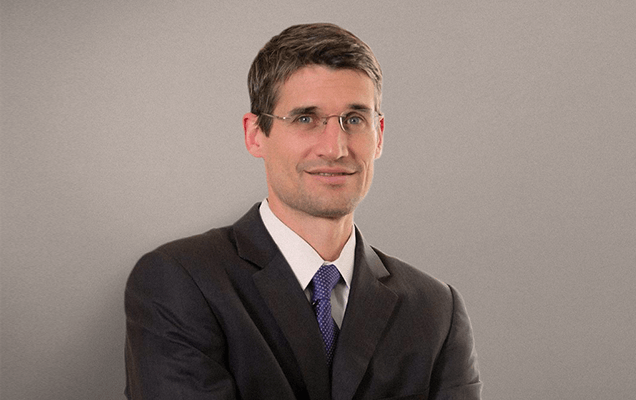If you’ve tried conservative options to manage your neck pain but you haven’t found the results you want, neck surgery is the next step. For many people who decide on neck surgery, however, the decision can come with a lot of uncertainty, like how long does it take to recover from neck surgery. The neck is a complex and sensitive part of the body, so some patients may understandably be concerned about medical conditions and treatments that affect it.
Here is some information to help you understand your surgery, the expected recovery timelines and factors that affect recovery so that you can feel more comfortable about your health going forward.
Common Neck Surgeries
Most neck surgeries are intended to address an issue with one or more spinal nerves. There are nerves at every level of your spinal cord, and they may become compressed or otherwise irritated if something in your spine is abnormal.
Spinal abnormalities commonly have to do with your discs, which are soft, jelly-like structures that act as pads between the bones in your spine. They may degenerate or become displaced, which can compress or irritate the nerve. The nerve may also become compressed if the foramen, the space through which it exits the spine, tightens for any number of reasons. Whatever the case, these issues can be effectively resolved with one of these three procedures:
Anterior Cervical Discectomy
An anterior cervical discectomy is a procedure used to treat pain caused by a disc that has either herniated or degenerated. In both cases, your surgeon will access the spine through the anterior, or front, then remove the affected disc and stabilize the area using a bone graft. He or she may also remove bone spurs that are pressing on your spinal nerve.
After the operation is finished, most patients are allowed to leave the hospital the next day. Discharge criteria will include your level of pain, your mobility and whether you can eat. Once you’ve left the hospital, a return to full activity will usually take no longer than three to six months. The most important factor for the post-operative stability of your spine is how long it takes for your bone graft to successfully fuse, so if this occurs more quickly, so will your recovery. Your doctor can monitor the progression of the bone fusion to better advise you on your activity.
Posterior Cervical Discectomy and Foraminotomy
A posterior cervical discectomy is similar to an anterior cervical discectomy in that the goal is to remove problematic disc tissue. The are two primary differences, however. In a posterior cervical discectomy your surgeon will approach the disc from the back of your neck as opposed to the front. Also, in a posterior cervical discectomy, the surgeon only removes part of the disc and the procedure does not require bone fusion.
The sole objective of a posterior cervical foraminotomy is to expand the space through which your nerve exits the spine. It does not address pain that may be generated by movement within a pathological joint. By expanding this space and relieving compression, the nerve will be less irritated and will therefore cause less pain. Your surgeon will enter through a small incision in the back of the neck, gently move aside your nerve and clear out the space surrounding it, known as the foramen. This may involve removing bone spurs or displaced disc material, depending on your condition.
After both procedures patients are usually discharged from the hospital within 1-2 days. It will take between 4 and 6 weeks before light work can be accomplished, while full recovery usually takes between 2 and 3 months. If necessary your doctor may suggest physical therapy sessions to aid recovery.
Cervical Arthroplasty (Disc Replacement)
Cervical arthroplasty involves replacing a damaged cervical disc with an artificial disc. The artificial disc is a prosthetic device that functions like a joint allowing normal range of motion. This procedure is similar to an anterior cervical discectomy and fusion in that all of the damaged disc is removed. The difference is in the kind of implant placed after disc removal.
The procedure involves surgeons making a small incision near the front of the neck and gently pulling aside the soft tissues. Once the damaged area is exposed the disc and bone material will be removed and the artificial disc will be inserted. The tissue will then be eased back into place and the incision will be closed.
Hospital stay after the procedure will vary based on each patient’s physical condition, but most people are discharged the same or next day. Usually light work can be done one to two weeks after surgery, with return to regular activity being achieved after six weeks.
It's time to get back
to doing what you love.
Factors Affecting Recovery
In addition to the severity of your condition and the specifics of your particular procedure, here are two of the most important factors that can affect your recovery.
Age
Younger patients generally recover from surgery faster than older patients. If you are a relatively young person undergoing neck surgery, you might expect to beat the milestones set out for the average patient.
Health and Lifestyle
In addition to age, a patient’s pre-existing health and lifestyle weigh heavily on the speed of recovery. Those in better overall condition prior to their procedure — such as those who don’t smoke, are not overweight and are free of chronic disease — experience faster recoveries.
Another important influence on the length of recovery is your lifestyle. If you have a physically demanding job or a generally active lifestyle, you may require more time than a less active person to reach 100 percent of your previous level of activity.
Final Thoughts
There is a range of factors that determine how quickly you get from the operating room to your full, everyday activity. You can use this information, along with discussions with your doctor, to give yourself a clear idea of how to get the most out of your surgery and recovery.

About Dr. Alfred T. Ogden
Dr. Alfred T. Ogden is an accomplished neurosurgeon in North Jersey and is a proud member of Neurosurgeons of New Jersey, practicing out of their Ridgewood office conveniently located on East Ridgewood Avenue. Dr. Ogden is internationally recognized as a leader in minimally invasive spine surgery.
Recent Posts:









